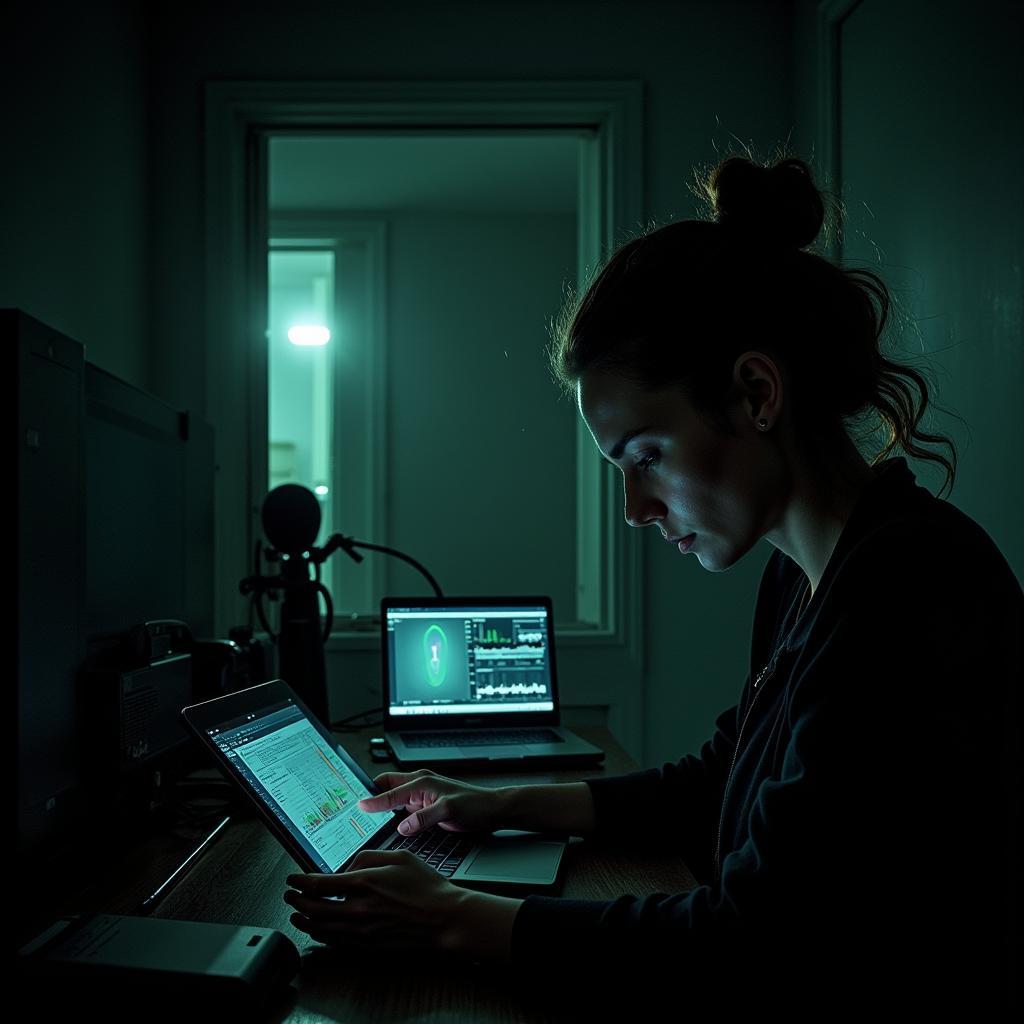Paranormal research, often abbreviated as “Nh Research,” delves into the unexplained phenomena that challenge our understanding of the natural world. This field of study investigates events and experiences that suggest the existence of forces and entities beyond the realm of scientific explanation.
What Constitutes Paranormal Research?
Paranormal research encompasses a diverse range of subjects, each with its unique set of methodologies and investigative approaches. Some of the most commonly studied areas include:
- Ghost Hunting: Investigating alleged hauntings, often involving historical locations, to gather evidence of spectral presence. This might include using electromagnetic field (EMF) detectors, recording audio for electronic voice phenomena (EVP), and attempting to capture visual evidence through photography and videography.
- Psychic Phenomena: Exploring abilities like telepathy, clairvoyance, precognition, and psychokinesis, often through controlled experiments and observation. Researchers in this area may design tests to assess the validity of claimed abilities and analyze statistical deviations from chance.
- Cryptozoology: The search for creatures whose existence is disputed or unsubstantiated by mainstream science, such as Bigfoot or the Loch Ness Monster. Cryptozoologists often rely on eyewitness accounts, footprint casts, and analysis of blurry photographs or videos.
- Ufology: Studying unidentified flying objects (UFOs) and the possibility of extraterrestrial life. This field involves analyzing eyewitness accounts, radar data, photographic and video evidence, and investigating potential landing sites.
The Scientific Approach to the Paranormal
While skepticism is crucial in paranormal research, many investigators strive to apply scientific principles wherever possible. This often involves:
- Objective Observation: Minimizing bias and subjectivity by employing standardized procedures, data logging, and multiple witness verification.
- Data Collection: Utilizing a variety of instruments to record data, such as audio recorders, video cameras, EMF meters, temperature sensors, and motion detectors.
- Hypothesis Testing: Formulating testable hypotheses based on existing data and designing experiments to support or refute these hypotheses.
- Critical Analysis: Rigorously evaluating evidence for alternative explanations, contamination, and potential errors in data collection or interpretation.
 Paranormal Researcher Analyzing Data
Paranormal Researcher Analyzing Data
The Challenges of Paranormal Research
Paranormal research faces numerous challenges, including:
- Lack of Reproducibility: Many paranormal phenomena are sporadic and difficult to replicate in controlled environments, making it challenging to study them systematically.
- Subjectivity and Bias: Personal beliefs and expectations can influence both the perception of events and the interpretation of data.
- Ethical Considerations: Investigating potentially sensitive situations involving alleged hauntings or psychic experiences requires respecting privacy, cultural sensitivities, and the emotional well-being of those involved.
Resources for Paranormal Research
For those interested in exploring paranormal research further, several resources are available:
- amnh research library: Offers a curated collection of books, articles, and historical documents on various paranormal subjects.
- research brainhq.com: Provides online forums, discussion boards, and resources for connecting with other researchers and sharing findings.
- manhattan research inc: Offers training workshops, seminars, and field investigations led by experienced paranormal researchers.
Conclusion
Paranormal Research, or “nh research” as it’s sometimes referred to, continues to captivate and intrigue. While it grapples with inherent challenges, the pursuit of understanding the unexplained pushes the boundaries of our knowledge and encourages us to question the limits of what we believe to be possible.